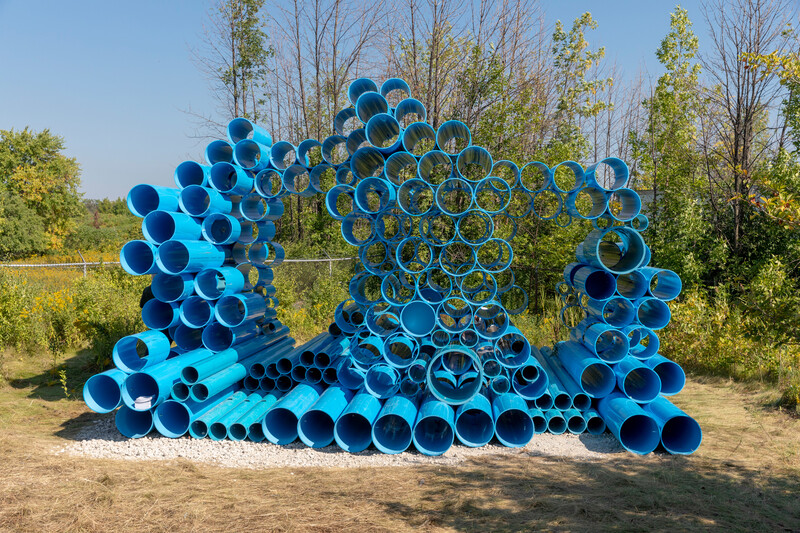
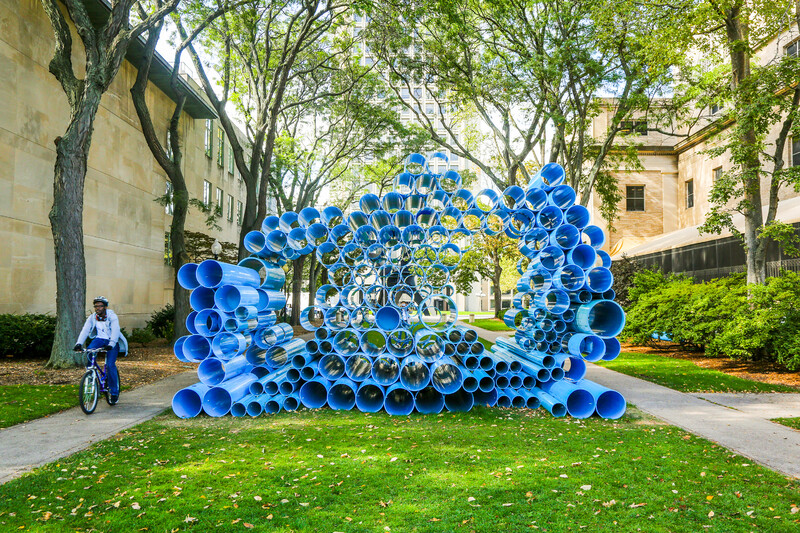

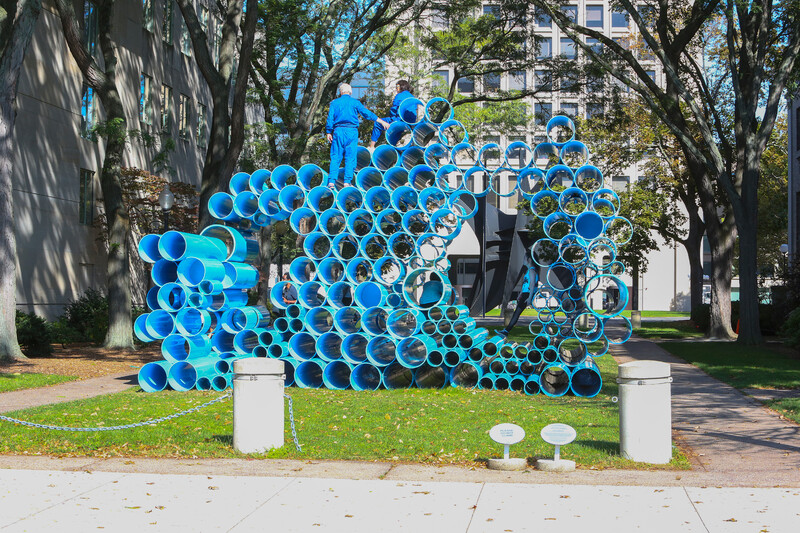
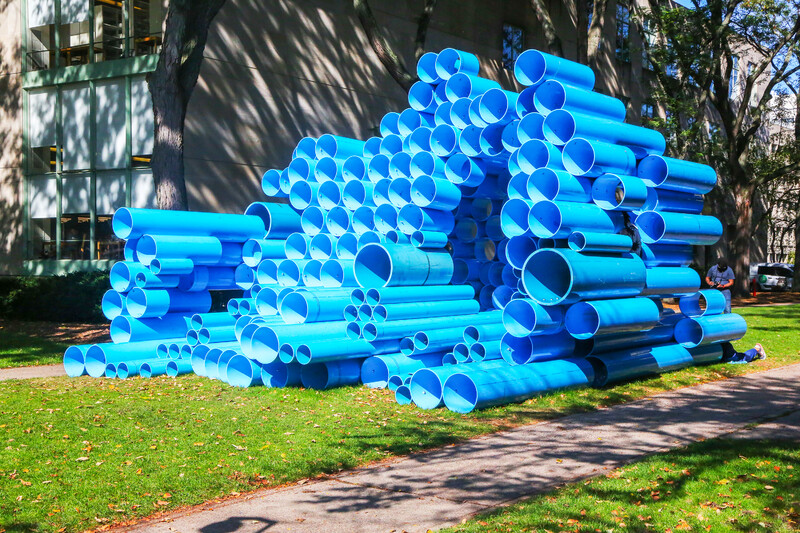
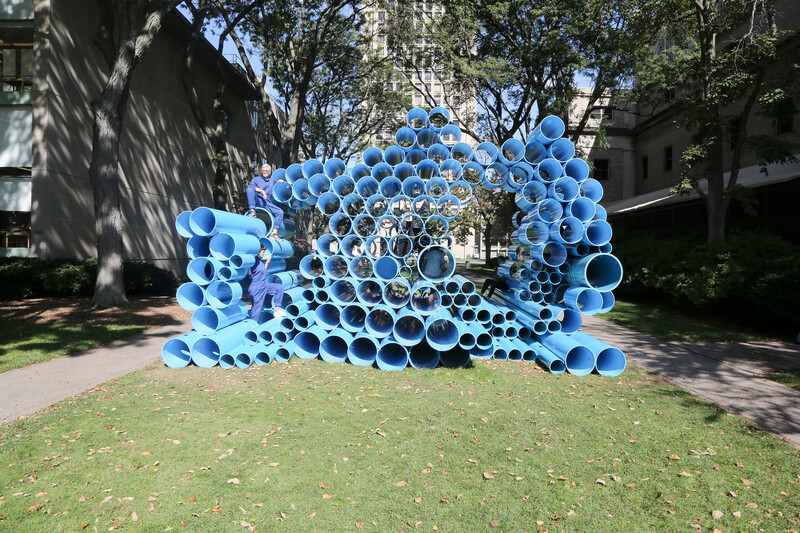
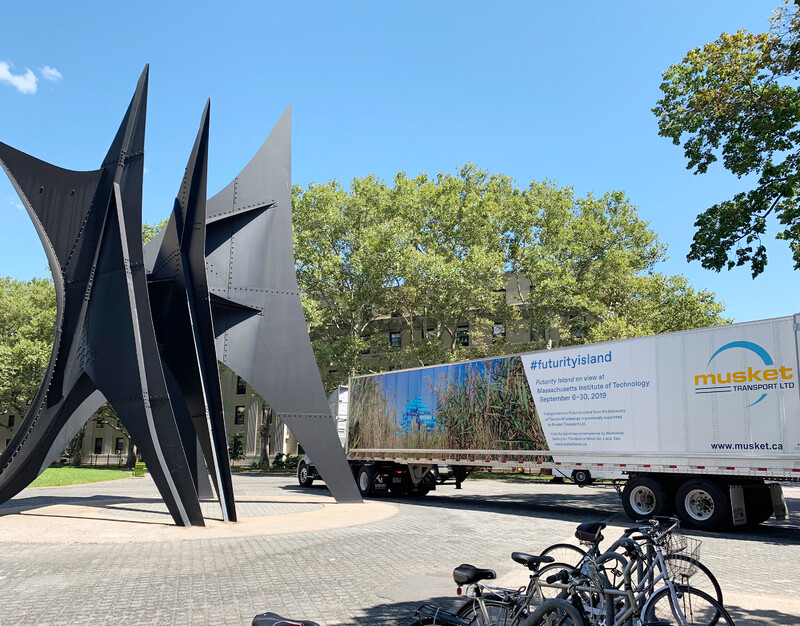
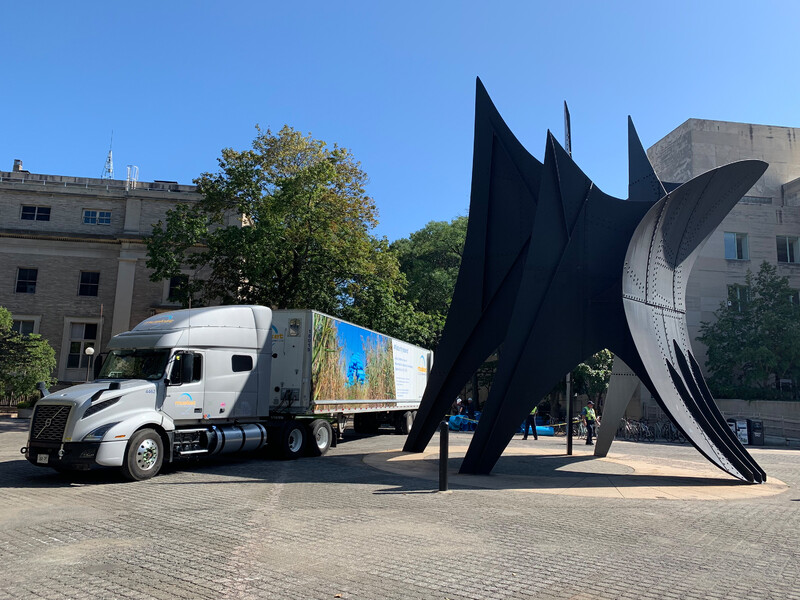

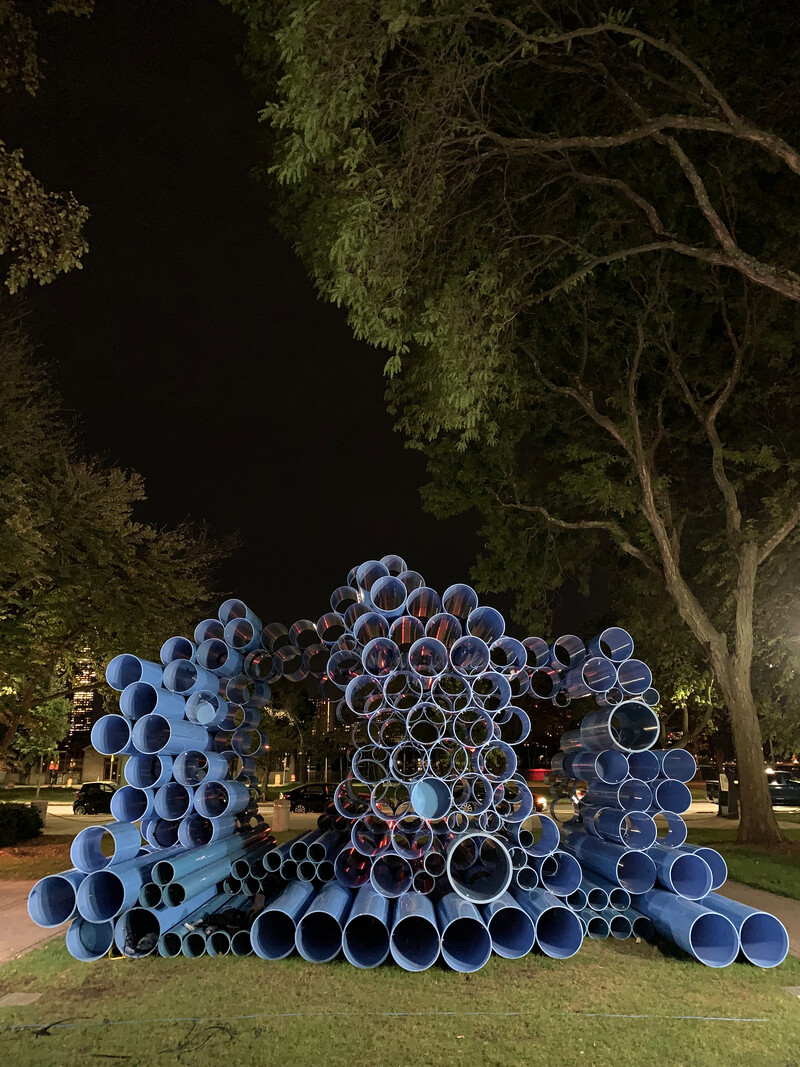
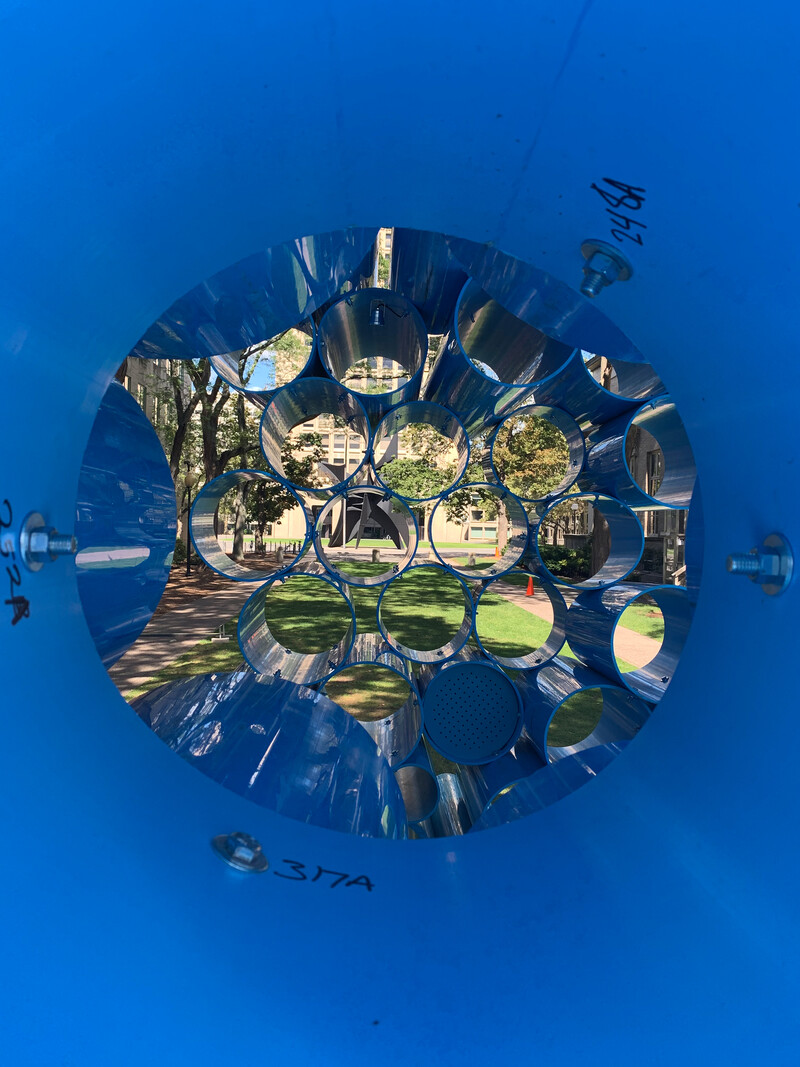
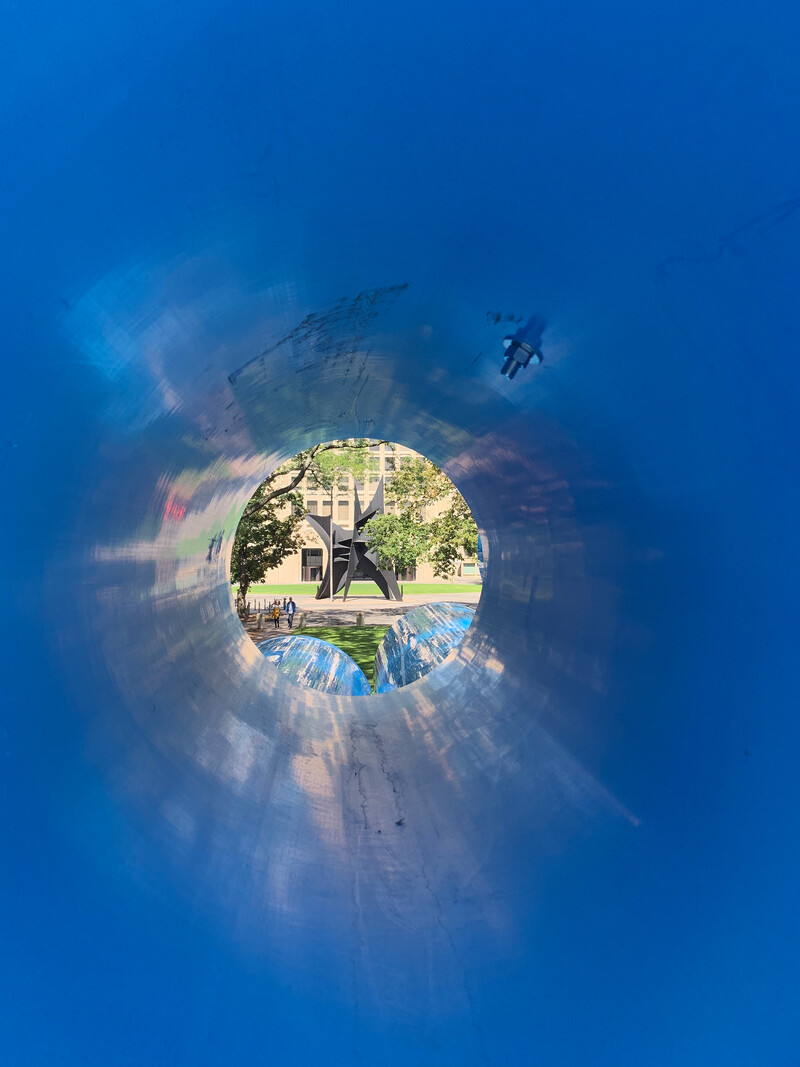

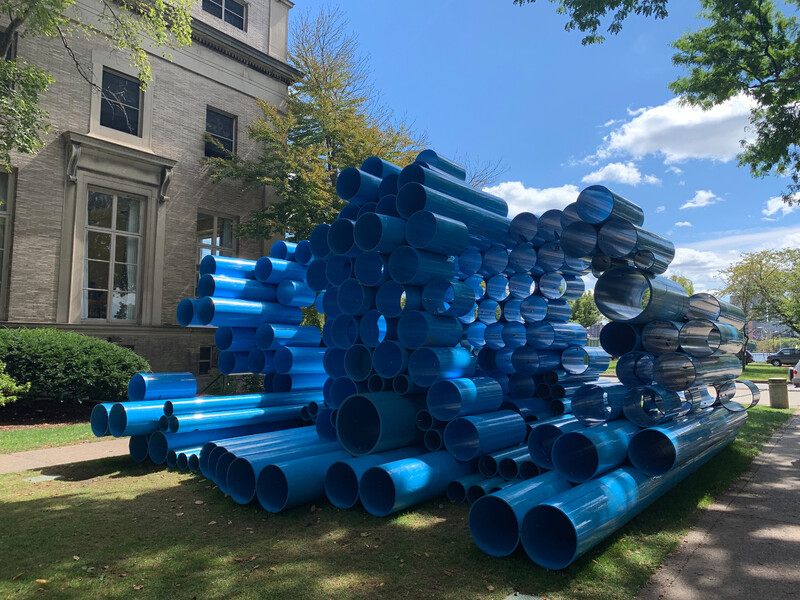
Futurity Island
Walker Memorial – West Lawn, Massachusetts Institute of Technology, Cambridge, MA
Futurity Island is an architectural structure conceptualized as a space for acoustic experimentation. It serves as an infrastructure that hosts sound compositions and performances that open space for learning.
Pipe is the primary structural and symbolic unit of the Island, referencing the material that has facilitated worldwide land reclamation throughout the modern era. Once used to drain swamps, pipe becomes a metaphor for a human-centered ecology, an infrastructure of environmental domination and one of the prime symbols of the Anthropocene. In Futurity Island, a network of pipes becomes an artificial skeleton that employs sound to channel what we used to call “nature.” Futurity Island builds a sound infrastructure that brings humans and non-humans into a more symmetrical, collaborative relationship, aiming to transmit and to hear the silenced voices of this planet.
By installing sonic transducers within the structure, Gediminas & Nomeda Urbonas create an organic, reverberating object that creates space for swampy mediations and acoustic experiments—using sound as a quaking force that destabilizes both architectural space and the human misconception that we are “builders of the environment.”
First presented at The Work of Wind: Air, Land, Sea in September 2018, Futurity Island was disassembled into individual pipe sections, and repacked into a single 53’ Musket Transport Ltd. trailer to be trucked from Mississauga to Cambridge, MA. With Futurity Island’s “swamp” making a cross-border transit, the work moves through geographies and infrastructures shaped by human restructuring of natural space—at the Massachusetts Institute of Technology, Futurity Island will be reassembled to animate the local environment alongside the Charles River. At a new site following its first presentation near Lake Ontario, Futurity Island’s pipe serves as a conduit to amplify and reverberate the cultural and environmental histories of each location.
Futurity Island builds on the legacy of MIT’s Center for Advanced Visual Studies’ Charles River Project.

The Blackwood
University of Toronto Mississauga
3359 Mississauga Road
Mississauga, ON L5L 1C6
[email protected]
(905) 828-3789
The galleries are currently closed.
Facebook | Twitter | Instagram
Sign up to receive our newsletter.
The Blackwood is situated on the Territory of the Mississaugas of the Credit, Seneca, and Huron-Wendat.